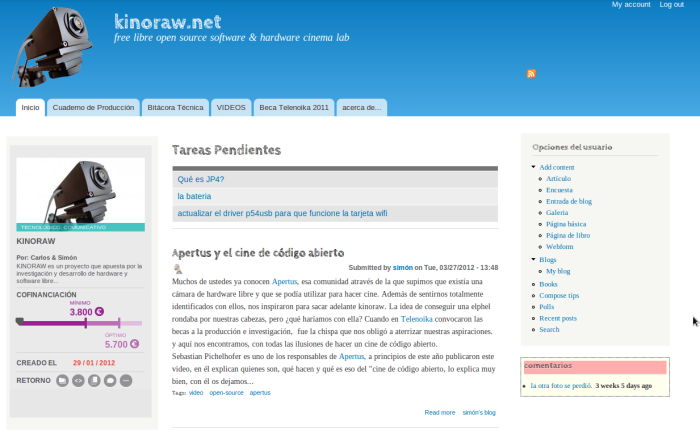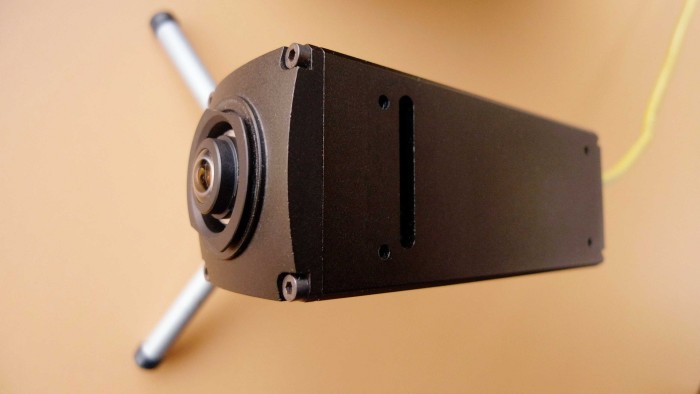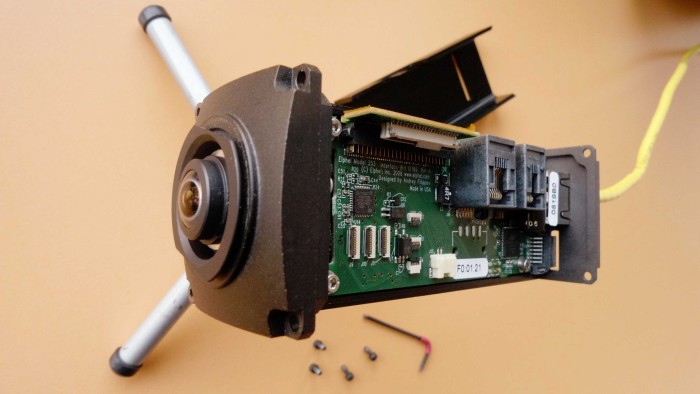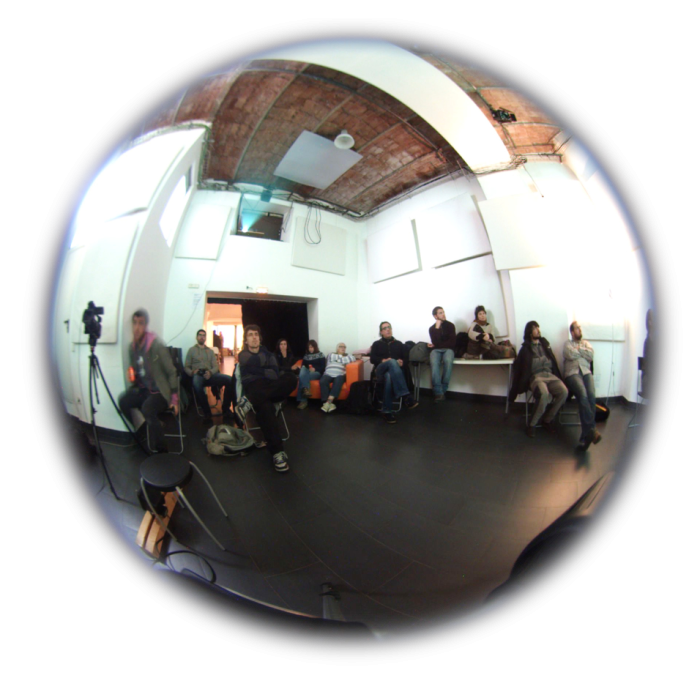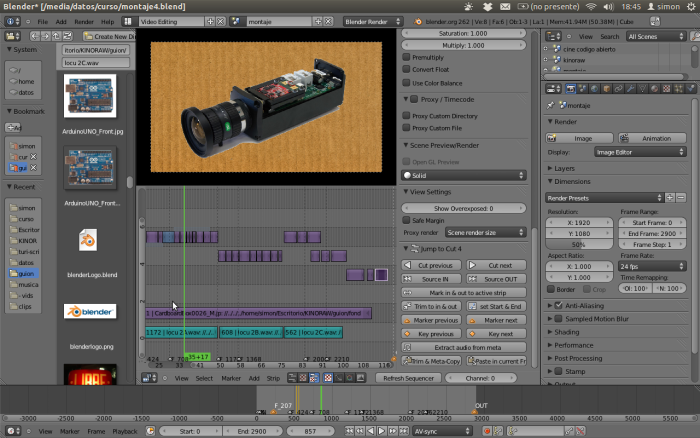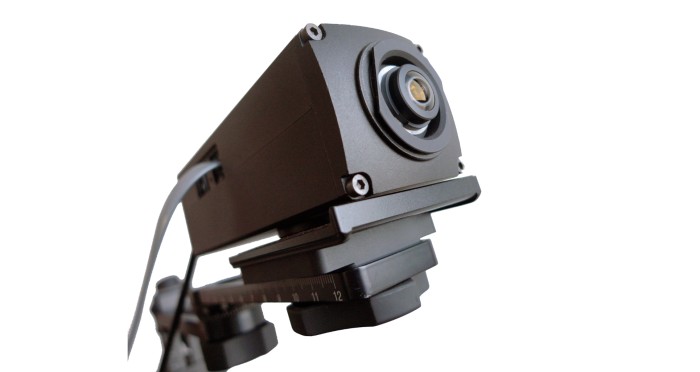KINORAW is a project that focuses on research and development of open hardware and software in the audiovisual context. We seek your support to experiment and develop an Elphel-Blender workflow.
Elphel (www.elphel.com) is an open source hardware and software camera used in scientific research, because it allows both the development for, and the adaptation, to each of the investigation specificities. We will contribute our efforts to develop it for cinematographic usage.
We work alongside the Apertus open source cinema community (apertus.org), which develops software using the device as a digital film camera. three of their lines of work are the stereocam, the DNG converter and the Elphel Vision software. We can benefit from the progress made by the community, like others may do so when we have developed tools that are open to extract all the juice out of Blender (www.blender.org).
What changes does the use of open hardware introduce in the media field?
We are bound to cameras using proprietary hardware and software, and will not free ourselves from the dependency of the media production industry until we unlock and claim the control of the entire filmmaking process.
And this is a great opportunity to break that dependence. We also try to contribute through this proposal to the re-implementation of creative techniques and technical knowledge that proprietary workflows try to hide out to end users, capping out unsuspected possibilities.
With the development of Elphel hardware we intend to expand the technological independence and creative freedom, in addition to cultivate the visual commons, both in the content and in the tools needed to produce those. We want this tool to help develop and expand the community, connecting it with other communities and users who share this knowledge of cinema and filmmaking.
The project has the invaluable help of Telenoika (www.telenoika.net) who have supported us in order to kickstart the project with a grant of 2000 €. With this grant we bought an Elphel camera, but taxes and duties put us out of budget. ... (more on this topic will follow latter).
Main features and goals of the crowdfunding campaign
The Elphel camera has extensive technical capabilities, which are not present in any other commercial cameras unless you know how to hack it. The idea of using the Ephel goes further beyond hacks like the Magic Lantern for Reflex Canon Powershot or the CHDK for developments for Panasonic GH-1.
The possibilities that Elphel allows include a wide range of exposure times, settings, continuous configuration values, analogisation of devices, millimeter adjustments. This means a lightweight filmaking equipment, competitive costs and ultimately represents a change in the conception of film tools.
Our plan at the KinoRaw project is what follows:
- Extensive testing of the camera (you can subscribe to participate :)
- To research linking Blender with Elphel for easy editing
- Code development based on the above premise
- Technical manuals for use
- Filming footage exploiting its full potential (accepting ideas!)
- Editing and postproduction of filmed contents
- Presentation and dissemination of results
Elphel Technical Specifications:
The camera it’s a modular device which can extend its capabilities. One of it’s technical characteristics is the IP connectivity over LAN, ie it broadcasts streaming video on ethernet, and therefore can be controlled remotely.
- Filter Aptina CMOS Bayer (Bayer Pattern) sensor with an optical format of 1/2.5 "(5.70mm x 4.28mm) and a native resolution of 2592x1944 (5 megapixel). Has a 12 bit ADC
- Optics: The camera has a C-mount, but comes with an adapter ring that also allows to use CS mount lenses (which allows reuse old lenses 16 and 8mm)
- Variable Frame-rate (up to 300fps at 320x240), including the possibility of ramps
and shutter speed.
- Variable resolution (from 16x16 up to 2592x1944 (5 megapixel))
- Variable Data-rate: 144Mbit/sa a SATA or 100Mbit / s ethernet streaming
- Customizable gamma curves
- Recording in RAW. In JP4 RAW format that requires a decoding process (DNG
conversion)
- Codecs free, lightweight, high-quality (MPEG, ogm)
- Connectors: SATA, Ethernet: 100Mbit Network with POE (48V), USB 1.1 with 5V power supply,
IDE 232: Access to Console and debug output.
Why this is important
This project is directed to those who want to contribute to the return of cinema to it’s original creative freedom, because, due to the free hardware developments, we believe now that it begins to be possible.
- Filmmakers and other visual artists
- Software developers
- Teachers of audiovisual content and in particular photography
- 3D Animators
- Hardcore moviegoers
- retired directors of photography
- Amateur home video directors
- Multimedia researchers
Goals of the crowdfunding campaign
- Spread the word on the project and contribute to the creation of a community
- Raise funds to test the camera and develop software tools
- Search partners for the process
- Provide economic stability to the project at the beginning
Team and experience
Carlos and Simon have extensive experience in various areas of film and the audiovisual such as: management, production, photography, research and teaching. In this project, they join forces and knowledge through www.kinoraw.net to contribute to the development of open source cinema through the professional use of free software and hardware tools.
Carlos is in charge of the Elphel-Blender workflow development and coaching, while Simon is responsible for production and project documentation.













